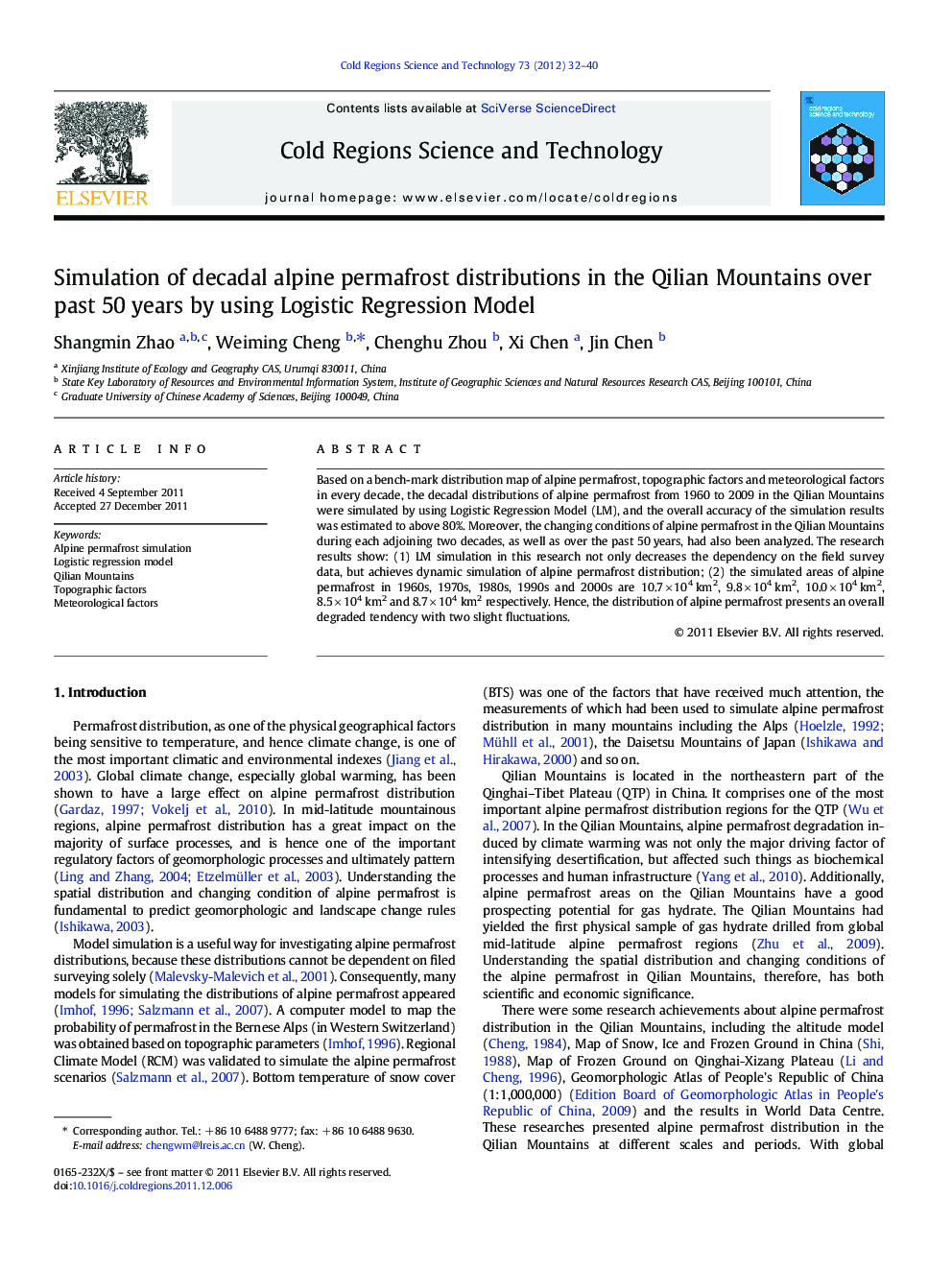| Article ID | Journal | Published Year | Pages | File Type |
|---|---|---|---|---|
| 4676027 | Cold Regions Science and Technology | 2012 | 9 Pages |
Based on a bench-mark distribution map of alpine permafrost, topographic factors and meteorological factors in every decade, the decadal distributions of alpine permafrost from 1960 to 2009 in the Qilian Mountains were simulated by using Logistic Regression Model (LM), and the overall accuracy of the simulation results was estimated to above 80%. Moreover, the changing conditions of alpine permafrost in the Qilian Mountains during each adjoining two decades, as well as over the past 50 years, had also been analyzed. The research results show: (1) LM simulation in this research not only decreases the dependency on the field survey data, but achieves dynamic simulation of alpine permafrost distribution; (2) the simulated areas of alpine permafrost in 1960s, 1970s, 1980s, 1990s and 2000s are 10.7 × 104 km2, 9.8 × 104 km2, 10.0 × 104 km2, 8.5 × 104 km2 and 8.7 × 104 km2 respectively. Hence, the distribution of alpine permafrost presents an overall degraded tendency with two slight fluctuations.
► Decadal alpine permafrost distributions are simulated in the Qilian Mountains. ► Logistic Regression Model is built for dynamic simulation. ► Accuracy of the simulation results is estimated to be above 80%. ► Dynamic change of alpine permafrost distribution is analyzed from 1960s to 2000s. Simulated distribution of alpine permafrost shows an overall degraded tendency with two slight fluctuations.
